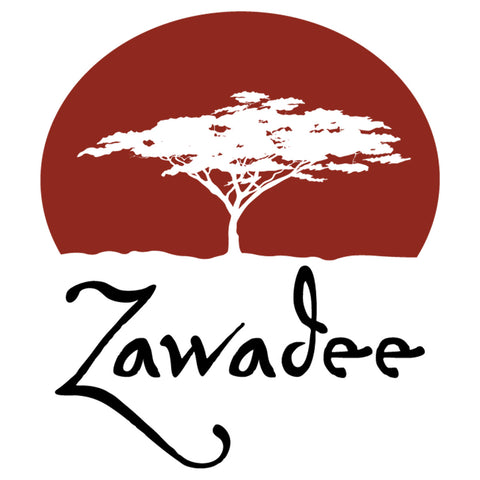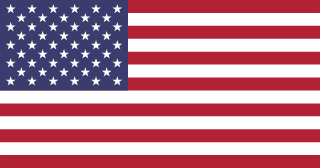Benefits of Bamboo Fabrics: How Bamboo Becomes a Scarf, Shawl or Cowl
While many people commonly associate bamboo with home décor items, mats, furniture and different types of art, there is a growing trend in the fashion industry as more and more clothing designers are using bamboo fabric rather than cotton. Our bamboo scarves and cowls are a great example!
While bamboo clothing items such as scarves, shirts and sweaters have been overlooked for years, it is starting to gain in popularity with designers and consumers who are looking for something unique. It is even used for rugs and towels because the fabric is known to dry very quickly. 
The Process of Turning Bamboo into Textiles
Here are the steps to organically turn bamboo into a textile:- Bamboo is harvested. Only the leaves and soft pith inside the bamboo stalks are used.
- Bamboo is crushed using heavy rocks or plywood boards.
- The crushed bamboo is placed into a container with water and natural enzymes.
- Let the bamboo sit until it takes on a pulp like state.
- Drain the bamboo and allow it to dry.
- Cut the bamboo fibres into smaller pieces.
- Place pieces into a pressurized vat with water and amine oxide (a nontoxic solvent).
- Heat mixture until bamboo fibres dissolve.
- Pour the liquid through a filter. This will create long textile fibres.
- Place the fibres in a mixture of water and amine oxide. Wait for the fibres to become soft and flexible.
- Rinse fibres.
- Hand dry and comb out the fibres, separating them in the process.
- Spin fibres into thread by hand. You can also use a spinning wheel.
- Knit (or weave) the thread to create the fabric.

There you have it! The organic and environmentally-friendly process to turn bamboo into a fabric that can be used to create almost any type of clothing. For designers, bamboo fabric is easy to use, and very versatile, allowing them to create almost any type of garment. It is naturally soft, and it takes dye colors well. In fact, it is actually softer than cotton and is commonly compared to cashmere from a softness perspective.
Benefits of Bamboo Fabrics
There are four main benefits of using bamboo as a textile:- It's antibacterial: Bamboo fabric is naturally antibacterial, and these properties do not diminish when washed.
- It's eco-friendly: Bamboo fabric is environmentally friendly. From the manufacturing process being easier on the environment, to bamboo requiring less water and energy to harvest, its quick regrowth, and because it does not require pesticides, it has much less of an impact than other materials used for textiles.
- It absorbs water well: Bamboo fabric naturally absorbs water. It can help to repel water, also, making it ideal for outdoor clothing, and it will help you stay cool and dry during the summer when it’s hot.
- It’s hypoallergenic: The fabric can be worn against the skin without the negative reactions that people experience when they wear other fabrics. Bamboo fibre is naturally smooth, making it less likely to irritate people who have reactions to other textiles..

Do You Know Where the Angora in Your Scarf or Shawl Comes From?
With a crisp chill in the air and snow under our feet, many of us are searching our wardrobes for something to wear that will increase warmth without making us look like the Michelin Man!

Do you ever wonder where the Angora fabric in your winter sweater and scarves comes from? You may be surprised! The mohair in our beautiful scarves, shawls, pashminas or cowls comes from Angora goats raised on the Rosecraft farm/textile atelier in the small country of Swaziland in Africa.

Our entire collection of scarves and shawls is created by the talented artisans of Rosecraft, a unique textile atelier. Specifically, the mohair comes from Angora goats raised on their farm, and a special color recipe is used in the dying of the fibers, creating a truly unique look you can’t get anywhere else.
Mohair – A Highly Desirable Luxury Fiber
Mohair is one of the most desirable fabrics. It is known for its unique combination of strength and softness, something that is only produced by Angora goats. According to the Colored Angora Goat Breeders Association, “A good mohair fleece will be characterized by locks or bunches of mohair fibers held together by the curl of the fleece, with a light sheen of oil and a good long staple. Angora goats produce as much as an inch of fiber a month. Since Angora goats are usually shorn twice a year, fleeces have a four to six inch staple.”
About Tsandza

“Our designs have an African soul but are inspired by international trends: the results are distinctive creations for individuals who appreciate the uniqueness of handmade pieces.”
Founded more than 35 years ago, Tsandza began as a hobby and has evolved into one of the most unique businesses in Africa. In a country where the overwhelming majority of the population lives in poverty, Rosa Roques’ vision has enabled talented local artisans to provide for their families. Tsandza started as a small workshop and today has become a successful business that employs more than 40 local women who produce products locally and internationally. Tsandza’s mission is “to create employment opportunities and a sustainable income for the women who work for us, and to be internationally recognized for our luxurious, handmade products.”
And the most unique thing about Tsandza - the Angora in their textiles comes from their own goats they raise on their farm.
Making everything by hand, the artisans weave, crochet and knit a variety of house and home wares, clothing and fashion accessories. Everything is made from pure natural fibers of mohair, as well as organically grown cotton, bamboo, wool and silk.

Tsandza is a member of the World Fair Trade Organization (WFTO) and the Swaziland Fair Trade Organization (SWIFT), and uses its success to support a number of local community projects helping to provide clean drinking water and collaboration with local schools. Learn more about Tsandza and how Zawadee helps to micro-fund their employment and training initiatives. You might also like to read about how our bamboo fashion textiles are created. Please read our blog.
What (Really) is a Pashmina?
In general, the term "pashmina" gets used pretty loosely. Without thinking about it, any large format shawl or wrap tends to be referred to as a pashmina!
But that's wrong!
Pashmina is actually a special kind of wool that only comes from the outer skin of goats living in the high altitude Himalayas. As only approximately 4 to 8 ounces of Pashmina fibre is shed by each goal annually, it takes a lot of goats to make true pashminas! While we undoubtedly admire the quality of well-crafted true pashmina or cashmere (kashmir) pashmina shawls, they can be very expensive. The pashmina-style shawl or wrap is now often made from blends of materials that create a silky soft fabric without the high price! Our pashmina-style shawls and wraps are finely woven from a smooth, soft cotton poly/viscose blend and are so fine, they can be drawn through a ring with ease!
How did Pashminas become so popular?
Well, totally aside from their beauty and warmth, you can probably (to some extent) blame Napoleon Bonaparte. He presented a Cashmere Pashmina Shawl to his wife, Josephine. Ladies of the court spread the news like wildfire, creating a "craze" for Pashminas all over Europe. Today, pashmina-style shawls and wraps are an essential fashion accessory. We have several collections of pashmina-style shawls and wraps and will be releasing additional collections over the next few weeks.Slow and Steady Wins the Race - The Benefits of Slow Fashion
That venerable tale of the tortoise and the hare isn't just an amusing story. It's a lesson in making the right choices - in the long run!

Our commitment to the environment (and peace of mind) has brought us to embrace the concept of 'slow fashion' - a turn away from globalized mass production in the pursuit of environmental health and quality fashion.
Our grandmothers used to say 'always choose quality over quantity'. Such good advice. Take a look in your wardrobe today and reflect on what pieces are still there - still being worn. Bet you it's the better quality pieces - less faddish - made with more attention to detail and finishing. Fashion trends turned away from our grandmother's mantra and became 'fast-fashion' instead. Often fashion knock-offs made of lower quality fabrics. This has contributed to sweat-shop workers being exploited and to the 'buy cheap - throw it out after one season - buy more' syndrome. Try this challenge - not only to better your wardrobe - but also to better your planet, both socially and environmentally.
Buy With Conscious Thought
Buy natural fabrics or materials made by talented artisans/designers who love what they do and execute their work with care. Slow fashion is ethical, ecological and 'green'. Slow fashion is a commitment to the state of our Earth - the planet we inhabit. Look for garments and accessories that are made with attention to quality production - pieces that will have longevity - pieces that broadcast contemplation, discernment and value. Zawadee has a commitment to 'slow fashion'. We are currently sourcing products from around the world that are socially and environmentally sound - as well as high quality, handcrafted garments or accessories to be proud of. Both fine silver jewelry and organic shawls of fashion accessories are 'slow fashion'. Handcrafted with pride by talented artisans who not only evidence great skills but also a commitment to being ethical and to reducing the environmental impact upon the planet.
The Tsandza Collection
First established in 1979, Tsandza Weaving, formerly known as Rosecraft Weaving, is a social enterprise that produces high quality products, handwoven in pure natural fibres by talented artisans in rural Swaziland.
Consumers seeking ethically produced items that make an impact to a bigger purpose when making their purchase will find "forever presents" that not only represent beauty and skill, but also contribute to a more sustainable future for us all
Made By Hand
Every step of Tsandza’s production process is done by hand. From the dying, spinning & weaving to the knotting & tasseling. Even our sewing machines for labelling are manual! This means every item we make is unique and exclusive to you. Our impact on our environment is greatly reduced, and it also means we need many hands, ensuring we continue to be a vital source of training and income generation for many rural women. It is quite a complex process requiring patience, skill and a lot of work!
The Azel Collection
The Tuareg Silversmiths of Azel have been designing and executing superb fine sterling silver jewelry for countless generations. Azel is located in northern Agadez (Niger) - a fairly daunting distance from hospitals and other support. That is why Mohammed Anou, a renowned Tuareg silversmith, grouped his fellow artisans together to form the basis of this remarkable jewelry - The Azel Collection. Mohammed hopes the collective's beautiful jewelry will benefit his beloved town of Azel - and help it's people!
There is a history and a story behind each piece and the traditional Tuareg motifs convey this in an intriguing way. Both ethical and environmentally conscious, The Azel Collection embodies both skill and conscious commitment by these remarkable artisans.
What's the Appeal of Handmade? A Renaissance of Taste
We encounter handmade products in trendsetting boutiques, and view them as artfully arranged emblems of good taste. So, why do we think that?
Handmade objects - whether art, garments, jewelry - can be found in the pages of magazines like Vanity Fair, The New Yorker, Vogue and more. Handmade items have become the status symbols of people who appreciate products that are not 'run of the mill' - aren't found at a local mall.
We think society is experiencing a wonderful renaissance - a return to a more tactile and down to earth appreciation in counterbalance to factory-produced sameness. Handmade products tend to reflect our humanity in a way that embodies a deeper story - one of craftsmanship, passion, creativity. Something handmade is special in a way that mass-produced items simply can't convey. Akin to the 'farm to table' movement - the desire to know the origin of what you are eating - now many of us want to connect what we are wearing - or displaying - in a more meaningful manner.
Join The Renaissance!
Zawadee has a commitment to quality handmade products. We are currently sourcing products from around the world that are socially and environmentally sound - as well as high quality, handcrafted garments or accessories and home décor to be proud of. We believe handmade - handcrafted - speaks to care, consideration, longevity and stewardship.
The Ardmore Collection
On Springvale Farm, located in the KwaZulu-Natal (South Africa), a most astounding art studio is found. Ardmore Ceramics has been acknowledged by the acclaimed auction house - Christie's - as producers of "modern day collectibles". Styled in an exuberant, exotic (even, may we say, whimsical style), the ceramics produced by this remarkable atelier are superb examples of design and craftsmanship
Often inspired by wildlife, Ardmore Ceramics have been exhibited in leading galleries and collections around the world, including The Museum of Art & Design in New York and The Museum of Cultures in Basel (Switzerland). Ardmore's modern art style breaks ceramic conventions, using techniques resulting from years of experimentation with materials and processes. The vibrant colours and enormous attention to detail are simply superb.
The Tsandza Collection
First established in 1979, Tsandza Weaving, formerly known as Rosecraft Weaving, is a social enterprise that produces high quality products, handwoven in pure natural fibres by talented artisans in rural Swaziland.
Consumers seeking ethically produced items that make an impact to a bigger purpose when making their purchase will find "forever presents" that not only represent beauty and skill, but also contribute to a more sustainable future for us all.
Made By Hand
Every step of Tsandza’s production process is done by hand. From the dying, spinning & weaving to the knotting & tasseling. Even our sewing machines for labelling are manual! This means every item we make is unique and exclusive to you. Our impact on our environment is greatly reduced, and it also means we need many hands, ensuring we continue to be a vital source of training and income generation for many rural women. It is quite a complex process requiring patience, skill and a lot of work!
The Azel Collection
The Tuareg Silversmiths of Azel have been designing and executing superb fine sterling silver jewelry for countless generations. Azel is located in northern Agadez (Niger) - a fairly daunting distance from hospitals and other support. That is why Mohammed Anou, a renowned Tuareg silversmith, grouped his fellow artisans together to form the basis of this remarkable jewelry - The Azel Collection. Mohammed hopes the collective's beautiful jewelry will benefit his beloved town of Azel - and help it's people!
Tuareg jewelry is distinctive, dramatic and meaningful.
There is a history and a story behind each piece and the traditional Tuareg motifs convey this in an intriguing way. Both ethical and environmentally conscious, The Azel Collection embodies both skill and conscious commitment by these remarkable artisans!
Got To Go There - Swaziland - One of the Last Remaining Absolute Monarchies
Swaziland is a small, landlocked monarchy in Southern Africa - best known for its wilderness reserves and festivals.
The borders of delightful Swaziland are shared with Mozambique and South Africa. The Lebombo Mountains, Mlawula Nature Reserve and the Hlane Royal National park are all fascinating spots to visit. Diverse wildlife including lions, hippos and elephants can be spotted throughout Swaziland.
The borders of delightful Swaziland are shared with Mozambique and South Africa. The Lebombo Moutains, Mlawula Nature Reserve and the Hlane Royal National park are all fascinating spots to visit. Diverse wildlife including lions, hippos and elephants can be spotted throughout Swaziland.
Swaziland is known for civility and peacefulness, making it a great place to begin to experience Africa. Artifacts indicating human activity dating back to the early Stone Age.
Artifacts indicating human activity dating back to the early Stone Age 200,000 years ago have been found in the Kingdom of Swaziland. Prehistoric rock art paintings date from c. 25,000 BC. The earliest inhabitants of the area were Khoisan hunter-gatherers who were largely replaced by the Bantu tribes who hailed from the Great Lakes regions of Eastern Africa.
Many interesting people were born in Swaziland. Noma Dumezweni is a Laurence Olivier Award winning actress who is now based in London. Noma played the role of Hermione Grainger in the stage production of Harry Potter and the Cursed Child and won a second Laurence Olivier Award for her performance. Luke Hall is a Swazi swimmer who competed at the 2008 an 2012 Summer Olympics. Leonard A. Payne was a British Flying Ace who was born in Swaziland and was credited with 11 confirmed aerial victories while piloting a Bristol F.2 Fighter.
There are almost too many nature reserves and animal sanctuaries in Swaziland to list! We've provided links to some of them (below) so you can view these amazing places.

Swazi (Swati or siSwati), a Southern Bantu language, is the national language of Swaziland, and is spoken by the majority of Swazi people. As both English and Swazi are the country's two official languages, English speaking visitors will encounter no language barrier. English is the medium of instruction, and is taught in all state and private schools. Competency in English is a prerequisite for admission into most post-secondary institutions. Swaziland is Africa's last absolute monarchy and it is considered an act of terrorism to criticize King Mswati III. But as Swaziland's banned opposition continues to speak out, the international community turns a blind eye. King Mswati III has ruled the small country with its one million inhabitants since 1986. In 1973, Mswati's father Sobhuza II banned all political parties and declared a state of emergency, which is still in place today. The king governs the country's 55 administrative divisions, known as Tikhundla, through its chiefs. A lot of the population in Swaziland are rural subsistent farming communities and there may be a sense of distrust for political parties and political change. There is a support of the king and also of the Tikhundla system, which was developed as a system for community involvement.

Sadly, although Swaziland is home to many wildlife parks and reserves, Swaziland has been accused by one of the world’s leading conservationists of being a puppet of South Africa in a bid to open the floodgates to a potentially calamitous legal rhino horn trade. We hope this changes soon!

Mlawula Nature Reserve
Handwoven or knit, these beautiful fashion scarves, shawls, wraps and home décor cushions, blankets and throws are the product of talented artisans from Swaziland. Using specially formulated dyes, they are able to achieve vivid, yet softly elegant colours.

- Gorgeous products created by local women in Swaziland giving them employment opportunities.
- Handmade every step of the process.
- Minimum environmental impact using natural fibres and biodegradable dyes.
- Designed with 'slow fashion', ensuring longevity and quality, encouraging slower production, fair wages and lower carbon footprints.
- Flavour of Africa with contemporary influence.
Handcrafted from all natural materials - merino wool, mohair & bamboo.
So Many Choices, Which Is Best?
The brilliance of a scarf lies in its relatively inexpensive properties. Scarves refresh timeless classics, like the traditional black or camel colored wool coat. An array of scarves can make you feel like your wardrobe has expanded exponentially when all you’ve done is add a few small pieces. Essentially practical in nature, they also add warmth, protect modesty, direct attention, and conceal physical flaws. The variety of ways in which to tie and wear a scarf lend that simple article of clothing to many styles, from simple to intricate.
The dizzying array of options makes picking out one scarf that will coordinate with multiple outfits tricky.
Colors & Patterns
Scarves come in more than just basic black, white, or gray. With the myriad colors and patterns available, consider purchasing multiple scarves that both coordinate with selected outfits and work well with your skin tone, hair, and eyes. Begin by identifying your personal color profile. Many fashion-oriented websites explain how to do that, with the first step focusing on figuring out whether your color profile is warm or cool. According to VisiHow, determining one’s color profile takes only a quick glance at the underside of your wrist. If the veins running beneath the thin skin appear blue, then you’ve got a warm profile; greenish veins signify a cool profile. People with warm color profiles look good in watermelon, coral, yellow, dark green, and peacock blue. Royal or navy blue, gray, black, fuchsia, pink, mint, powder blue, and cherry flatter people with cool color profiles.
Discard items in colors that make you look sallow or tired or “washed-out.” Pink Lily describes how colors work together. In short, complementary colors help to mix warm and cool colors so they flatter rather than clash. Analogous colors harmonize with each other, cool with cool, warm with warm. Grouping your wardrobe by color helps to determine scarf colors that will look good with the clothing as well as against your skin!

Old rules governing style have relaxed. These days fashion permits mixing patterns with other patterns. When taking this bold step, carefully consider size and scale as well as color. According to Pink Lily, “You can pair a houndstooth coat with a houndstooth scarf in black and white, as long as you make sure the two prints are different sizes or feature inverted colors.” The site also reminds readers that pattern goes beyond color: textures in fabric also create patterns. Zawadee’s










